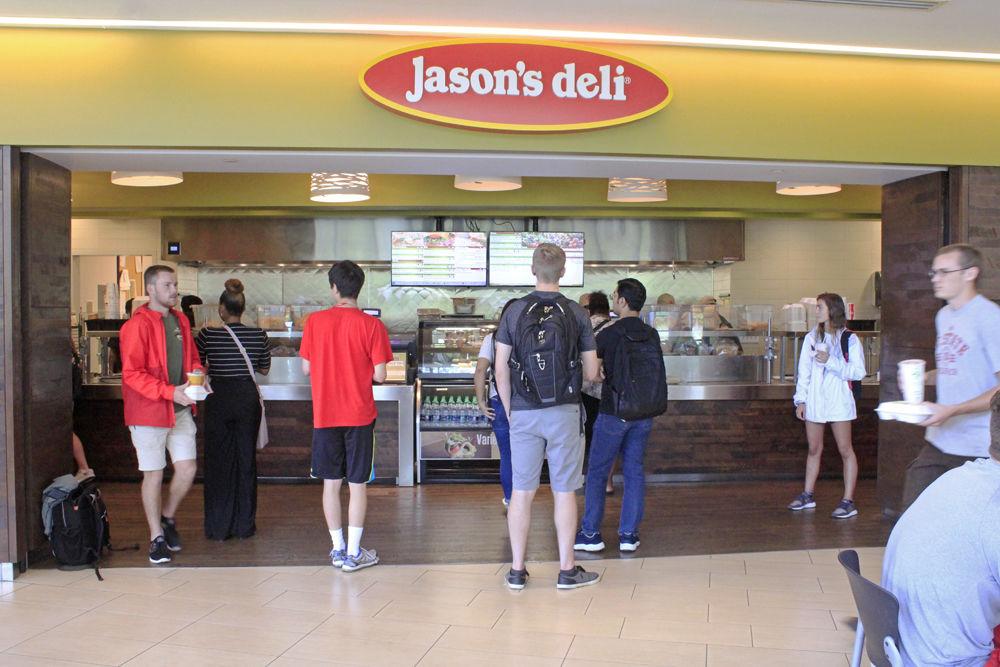Tapingo’s increased popularity over the past few years has meant occasional slow service, but behind the scenes, engineers and staff have been working to keep up with growing demand.
During the lunch hour, the app can show estimated wait times of 30 minutes for places like Jason’s Deli. Randy Lait, senior director of Hospitality Services, said that he was confident that long wait times were not representative of a slow-moving system.
“From the prep time, that’s after you’ve ordered, and the ticket prints and they start making your order,” Lait said. “At the 50th percentile mark we’re 10 minutes; that’s not that unreasonable. Seventy-five percent are done in 14.3 minutes. Ninety-five percent are done in 22.9 [minutes]. When you say long wait times, there’s somebody in there that feels like a long, long time was 35 minutes. And that could be very true for them.”
This means half of orders are completed in 10 minutes or less. Edge cases do exist, especially during lunch, but Lait and other staff have been working to improve the experience overall.
“Over the summer, we worked with Tapingo to implement some programmatic changes that were intended to help us improve order throughput,” Lait said. “And we’ve seen in some of our locations that’s been true. Now, there’s always going to be an outlier.”
Anthony Brown, director of Talley Retail Operations, discussed some specifics and Tapingo’s overall success.
“At our busier locations, I think we’ve done an outstanding job of changing the times,” Brown said. “Starbucks does an amazing job as far as organizing and pushing items out as far as walk-up customers and virtual line customers using the Tapingo system.”
Scott Harmon, director of Retail and Concessions Operations and Tapingo program manager, mentioned Starbucks and how the efficiency has translated into results over the past year.
“They had gone up almost 90 percent in volume, and the service times have gone down dramatically for Tapingo,” Harmon said. “So that was nice to see and report some wins and show that improvement.”
Ideas from Starbucks were also implemented in other locations, Brown said.
“We’ve tried the same thing here at Tuffy’s,” Brown said. “We moved the Tapingo counter near the register. We removed the piece of glass to give them that personal conversation and make sure the items are correct.”
Brown said that even though Jason’s Deli is, by nature, slower than other restaurants, there was still room for improvement.
“We split Jason’s Deli up a little bit, where we push Tapingo out one side as far as pickup counter versus walk up customers doing the same thing,” Brown said. “We try to make it as even, as fair and balanced to anybody that uses our walk-up system or virtual line system.”
Jennifer Maynor, a fifth-year studying political science and Jason’s Deli student supervisor, said there was a simple explanation for why Jason’s Deli tends to be slower than the rest: customization.
“The reason why it’s more difficult for us to get it out faster is because it’s specific sandwiches made a certain way,” Maynor said. “You can customize it any way you want it, and we have a lot more things on the menu.”
In person, someone could easily tell how long the wait for a restaurant might be, but wait times are harder to visualize when ordering through the app. Lait said this was something they worked on improving over the summer.
“When you’re doing mobile ordering, it’s harder to have that clue because the only order to you is your order,” Lait said. “So, finding our ability to do that flow and to let you know where you are in that process becomes important. In the app, it displays for you at the time of order kind of a prediction of how long it’s going to be before you get your food.”
As of Oct. 4, Tapingo introduced an update that more accurately represent order times.
“The biggest change people will see is that if you ordered from the Port City Java here at Talley at 10:20 [a.m.],” Lait said. “That’s during breakfast. You ordered a coffee, a bagel and a couple of things like that. If it didn’t take your meal until the order ticket printed out, which might be at 10:32. At 10:32, we’re in first lunch.”
This was a frequent issue, according to Harmon. Students would get breakfast processed late, go to get lunch, and they wouldn’t have a meal credit for lunch. However, this is no longer a problem.
Harmon said that issues that users of Tapingo encounter are always handled by staff interested in seeing improvement on all fronts.
“We continue to make it better,” Harmon said. “Things grow. We grow with it. We dedicate a lot of effort to it, and we’ll continue to do so.”








